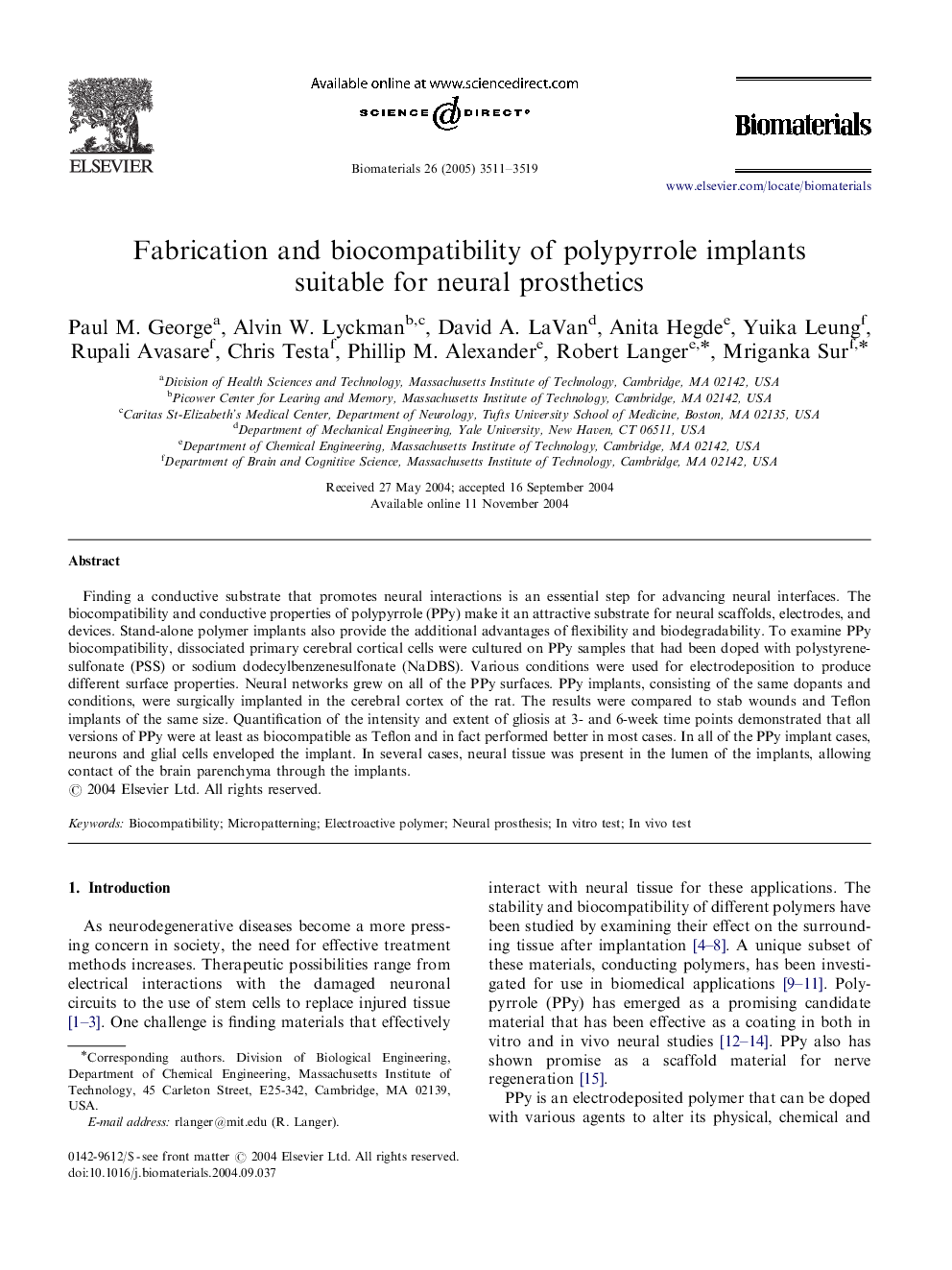| Article ID | Journal | Published Year | Pages | File Type |
|---|---|---|---|---|
| 12731 | Biomaterials | 2005 | 9 Pages |
Finding a conductive substrate that promotes neural interactions is an essential step for advancing neural interfaces. The biocompatibility and conductive properties of polypyrrole (PPy) make it an attractive substrate for neural scaffolds, electrodes, and devices. Stand-alone polymer implants also provide the additional advantages of flexibility and biodegradability. To examine PPy biocompatibility, dissociated primary cerebral cortical cells were cultured on PPy samples that had been doped with polystyrene-sulfonate (PSS) or sodium dodecylbenzenesulfonate (NaDBS). Various conditions were used for electrodeposition to produce different surface properties. Neural networks grew on all of the PPy surfaces. PPy implants, consisting of the same dopants and conditions, were surgically implanted in the cerebral cortex of the rat. The results were compared to stab wounds and Teflon implants of the same size. Quantification of the intensity and extent of gliosis at 3- and 6-week time points demonstrated that all versions of PPy were at least as biocompatible as Teflon and in fact performed better in most cases. In all of the PPy implant cases, neurons and glial cells enveloped the implant. In several cases, neural tissue was present in the lumen of the implants, allowing contact of the brain parenchyma through the implants.
